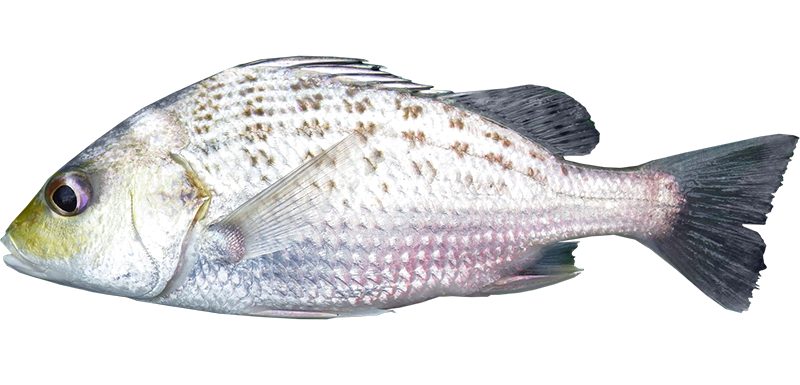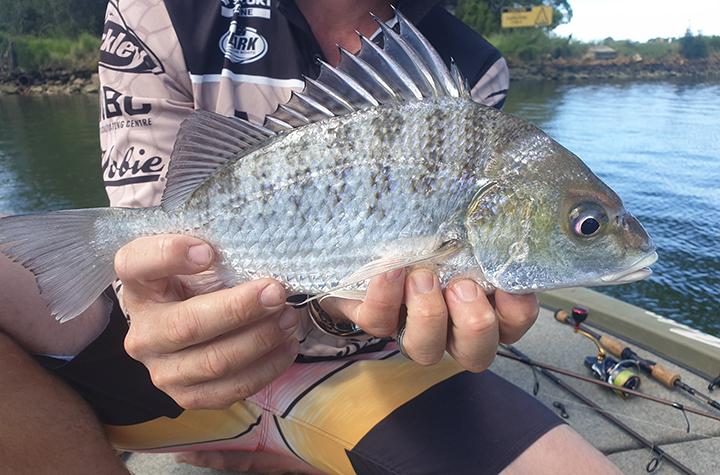A fishy capture reveals a prized tropical species moving south
A fishing expedition on the NSW Mid North Coast has hooked an unexpected catch for a Southern Cross University marine researcher
When brothers Benjamin and Daniel Mos went fishing over summer, the pair did not anticipate their catch to be anything other than a photo opportunity or dinner.
Instead, the fish they captured and released, commonly called the barred javelin, is rare to find in New South Wales waters.

“While this species is likely well-known to fishers in Queensland, it is not something we typically find here. We had to look through a few fish books and websites to identify our specimens,” said Dr Benjamin Mos, a marine biologist based at Southern Cross University’s National Marine Science Centre.
A scientific paper outlining the pair’s discovery, is now published in the Journal of Fish Biology.
The captures in late 2021 and early 2022 are the southernmost records for the barred javelin reported to date. And there may be more around the area.
“At the end of May 2022, we saw posts on social media about a barred javelin caught from Deep Creek, which is just north of the Nambucca River where we found our specimens,” Dr Mos said.
The species has been previously sighted in the Richmond River and Clarence River systems on the NSW North Coast, which are around 200 kilometres north of the Nambucca River where the latest specimens were discovered.
It is not known if the arrival of the barred javelin this far south into NSW is due to changing ocean conditions.
“It is possible the sightings this far south are a one-off event. However, our sightings fit with a broader pattern occurring in the waters off south-eastern Australia which points towards a role of climate change,” said Dr Mos.
“In our region, dozens of tropical species are moving southwards where oceans and estuaries are also warming faster than the global average.”
According to Atlas of Living Australia records, the barred javelin has not been collected in NSW in more than 50 years.
The barred javelin’s southernmost stronghold is Queensland’s Moreton Bay, off Brisbane, where the species supports economically important recreational and commercial fisheries.
The species is a popular sport fish and reportedly good eating. The barred javelin grows to around 80cm in length and is found in estuaries and offshore to around 75 metres deep.
Dr Mos said the newcomer was not of particular environmental concern at present. The barred javelin’s relative rarity in NSW and generalist diet means it is unlikely to outcompete local species.
In the Mediterranean, tropical fishes moving into sub-tropical or temperate areas pose threats to biodiversity, public health, and fisheries. Two examples include herbivorous rabbitfishes chomping away at kelp forests, and poisonous silver-cheeked toadfish fouling fishers’ nets and stealing their catch.
In contrast, the barred javelin may be welcomed by NSW recreational and commercial fishers.
“It is important that we understand where this species is showing up, and in what numbers,” Dr Mos said.
“If greater numbers make their way to NSW over coming decades the barred javelin may become a more common catch. It might then be necessary to look at whether specific size or catch limits are needed to ensure more fishers have the opportunity to catch this fish.”
Because the barred javelin has been rarely captured in northern NSW, there are at present no specific catch or size limits for this species in NSW. A maximum daily bag limit of 20 applies to all fish in NSW that do not have specific bag and size limits. A 40 cm minimum length and bag limit of 10 applies in Queensland waters.
Fishers, divers, and the general public can help scientists track the movement of fish and other marine organisms to new locations by reporting unusual sightings to RedMap Australia at www.redmap.org.au
Study details
‘Range expansion of a widespread Indo-Pacific haemulid, the barred javelin Pomadasys kaakan (Cuvier, 1830), in a climate change hotspot’ by Benjamin Mos and Daniel Mos.
Published in Journal of Fish Biology


